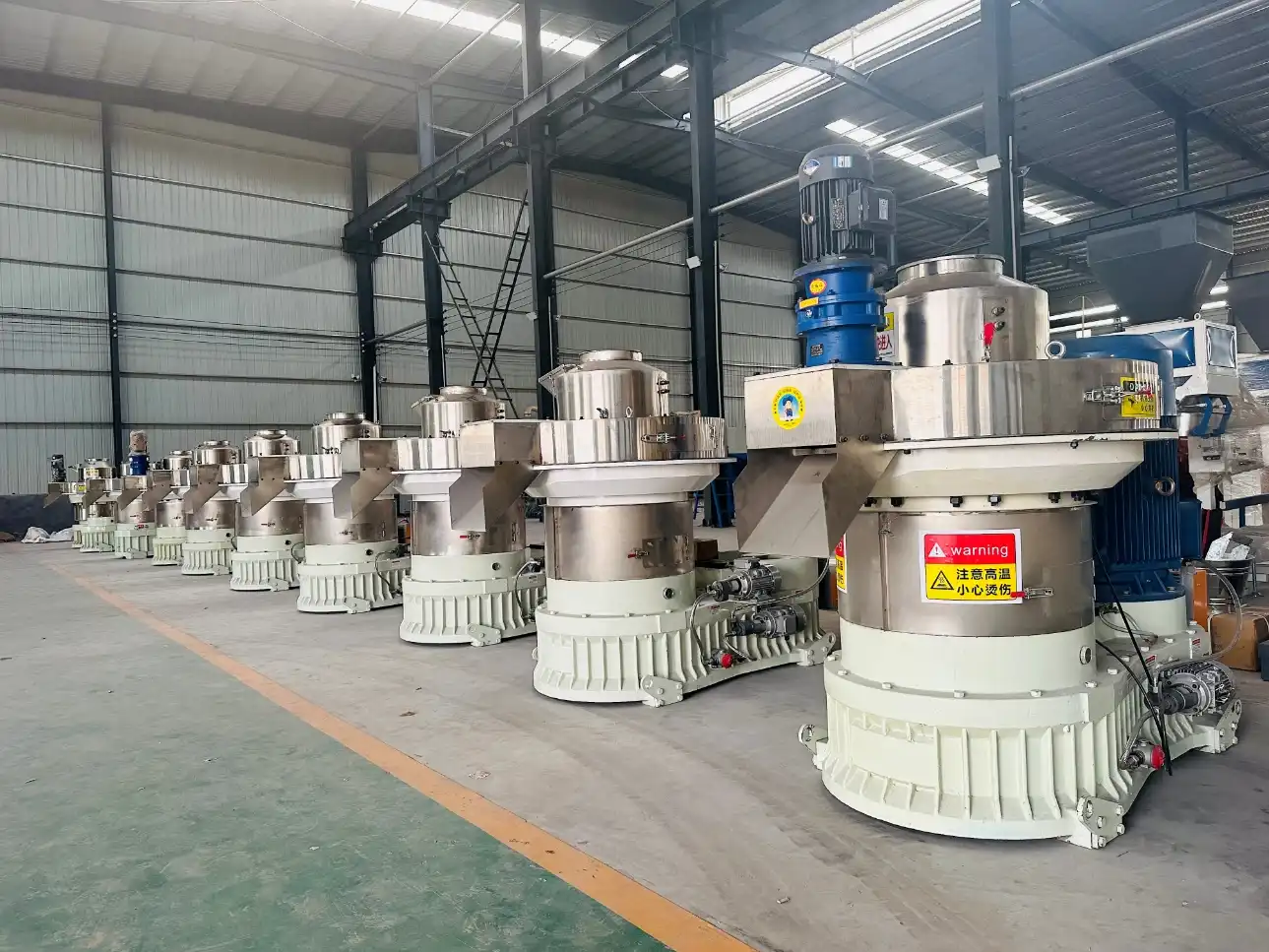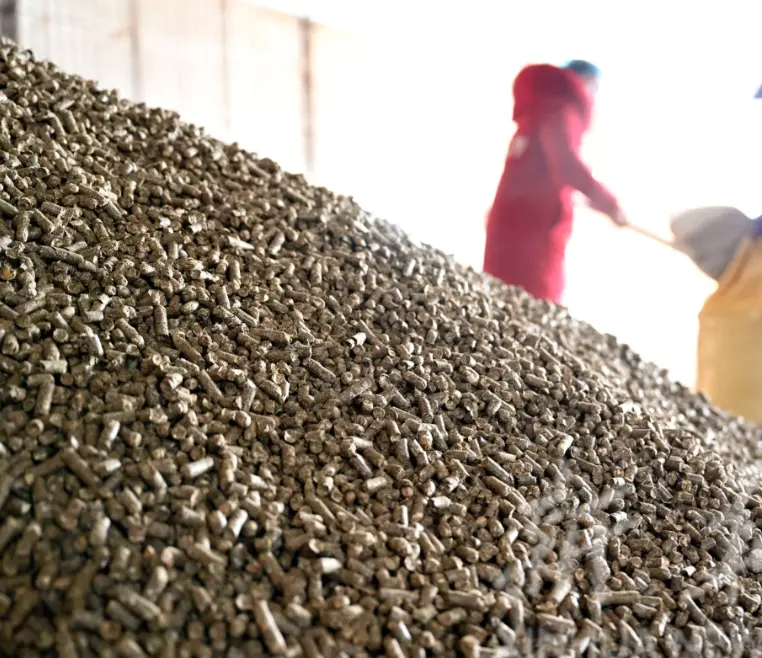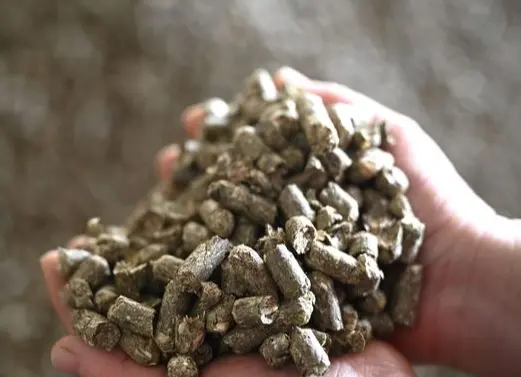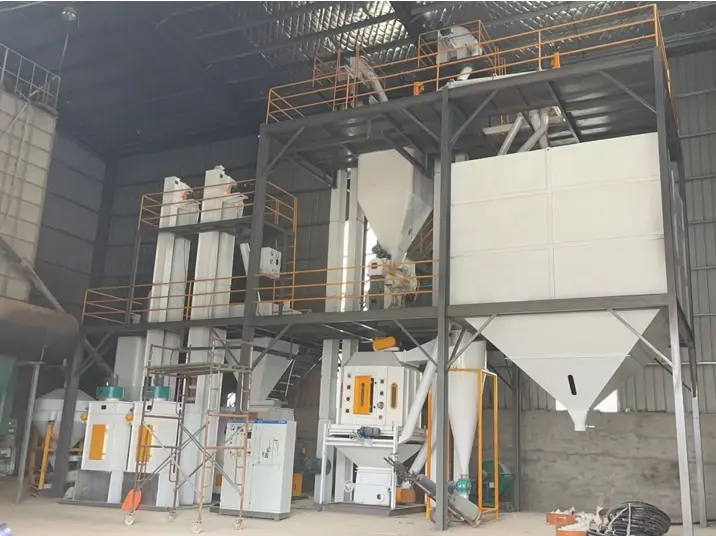
sunflower-hull-pelletUtilizing Sunflower Hulls as Solid Biofuel: Revolutionizing Energy Efficiency in Oil Mills
Sunflower hulls, derived from sunflower seed de-hulling before oil extraction, present an untapped resource for powering sunflower oil mills. Traditionally, these hulls, light and low in density, weren’t ideal for direct burning in boilers or stoves. However, the innovation of the sunflower hull pellet machine has transformed this by-product into a potent biofuel source, reducing energy costs for oil mills worldwide.

Characteristics of Sunflower Hulls as Fuel
| sunflower hulls |
Characteristics
|
|
Density
|
0.16
|
|
Carbon
|
40%
|
|
Hydrogen
|
6%
|
|
Oxygen
|
41%
|
|
Nitrogen
|
1%
|
|
Sulfur
|
1%
|
|
Moisture
|
9%
|
|
Ashes
|
2%
|
|
Ashes melting temperature
|
1290℃
|
|
Calorific power
|
14,000 BUT/kg
1.15 MJ/kg
|
The Sunflower Hull Pellet Machine:
This machine efficiently processes sunflower hulls into pellets without requiring prior drying. Additionally, by mixing the relatively low heating value of rice husks with sawdust before pelletizing, the calorific value of the pellets can be significantly enhanced. The compact and environmentally friendly rice husk pellet mill, operable via electric motor or diesel engine, stands out due to its mobility, low maintenance, and minimal investment, making it ideal for on-site solid fuel production at sunflower oil mills.
Technical Data of the Combined Sunflower Hull Pellet Machine:
Technical Data of Combined Sunflower Hull Pellet Machine
|
Model
|
Power
|
Capacity(kg/h)
|
Dia. of die mould
|
Packing size
|
|
|
AZSPLM 230
|
11kw
|
Wood pellets:150-190
|
230mm
|
1140*470*970mm
|
|
|
AZSP-230D
|
22HP
|
Wood Pellet: 150-190kg/h
|
1180*560*950mm
|
||


Benefits of Sunflower Hull Pellets as Solid Biofuel for Oil Mills:
Produced as dark brown cylindrical pellets of 6-8mm diameter, sunflower hull pellets offer high calorific value and efficient energy utilization. With a calorific capacity 1.6 times higher than wood pellets and comparable to coal, burning 1000 kg of sunflower hull pellets generates energy equivalent to burning 685 liters of furnace oil, 500 liters of diesel oil, 479 cu m of natural gas, or 1600 kg of wood pellets. Moreover, they contribute negligibly to global warming.

Sunflower Hull Pellets Specifications:
|
Common diameter
|
Ash content
|
Density
|
Moisture content
|
Calorific value
|
|
|
Sunflower hull pellet
|
6-12mm
|
0.49%-1.5%
|
1-1.4 g/cm3
|
7.64%-8%
|
4.5 MJ/kg-18MJ/kg
|
As an esteemed international biofuel pellet machine manufacturer, we extend our offerings of top-notch sunflower hull pellet machines to sunflower oil production nations like Ukraine, Russia, the EU, Argentina, Turkey, and beyond. Our machines empower sunflower oil mill owners to efficiently convert their waste into a valuable solid fuel, significantly reducing energy expenses.





